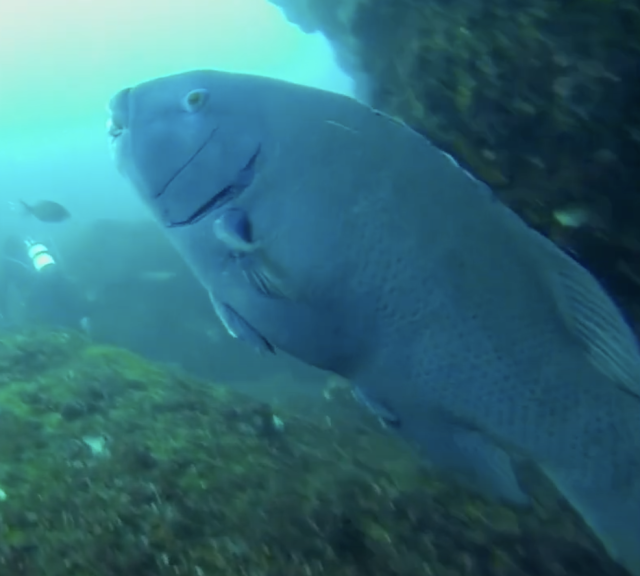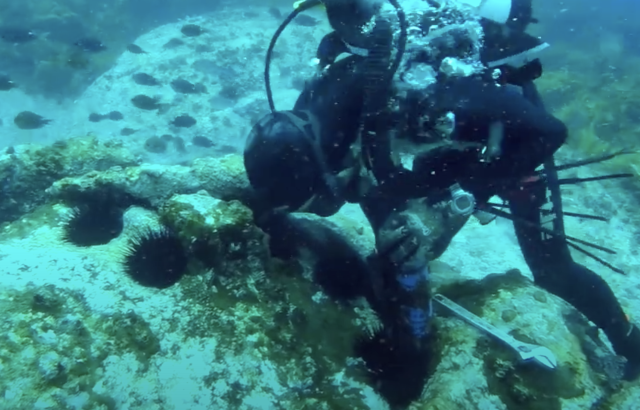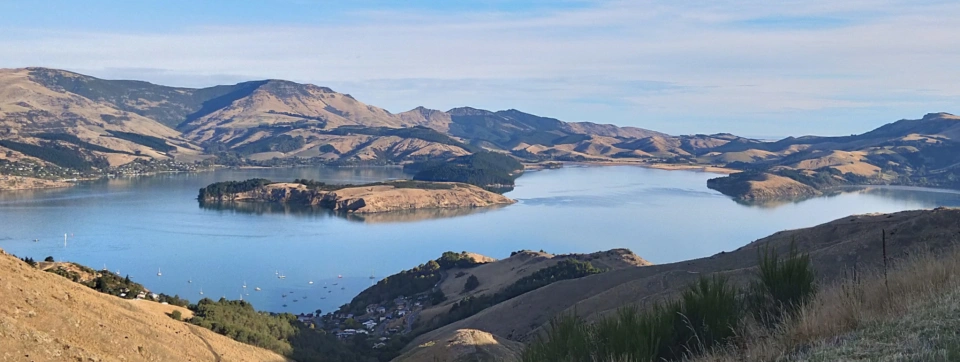Restoring urchin barrens in Sydney Harbour
Sea urchins have over-adapted to urbanisation, because we’ve removed predators from the food chain, things like Blue Gropers, which would typically clear large populations of urchins.

So in a particular area, they can just eat all the kelp, for example. So you get these areas called urchin barrens. They run out of food, the urchins will ultimately die, and you just get these clear patches of sand where they've been.
So in Sydney harbour, the way we're restoring kelp where it's been degraded, primarily through urchin predation, is simply removing the urchins. It is something we do by hand. If you've ever picked an urchin up - we don't recommend it! So the teams we have, they’ve got to have all the right gear, and it’s a slow process. The same team who are doing the seagrass restoration have Operation Crayweed, and they're also doing the kelp work for us in Sydney Harbour. This is based out of the University of New South Wales, with a collaboration from the University of Sydney.
They have got a trial area at Little Bay, which is near Maroubra. It's a reasonably small area. In three years they've been running that trial, they've removed over 7,000 urchins from the area. If you look at aerial photos, it has gone from being, patchy black bits of kelp you could only just see, to just entirely black - all you see is the kelp under the water. Kelp is an algae – so it does grow very quickly. This means that we're able to restore those types of environments way more quickly than we can with things like seagrasses.

Sea urchins have over-adapted to urbanisation, because we’ve removed predators from the food chain, things like Blue Gropers, which would typically clear large populations of urchins.

So in a particular area, they can just eat all the kelp, for example. So you get these areas called urchin barrens. They run out of food, the urchins will ultimately die, and you just get these clear patches of sand where they've been.
So in Sydney harbour, the way we're restoring kelp where it's been degraded, primarily through urchin predation, is simply removing the urchins. It is something we do by hand. If you've ever picked an urchin up - we don't recommend it! So the teams we have, they’ve got to have all the right gear, and it’s a slow process. The same team who are doing the seagrass restoration have Operation Crayweed, and they're also doing the kelp work for us in Sydney Harbour. This is based out of the University of New South Wales, with a collaboration from the University of Sydney.
They have got a trial area at Little Bay, which is near Maroubra. It's a reasonably small area. In three years they've been running that trial, they've removed over 7,000 urchins from the area. If you look at aerial photos, it has gone from being, patchy black bits of kelp you could only just see, to just entirely black - all you see is the kelp under the water. Kelp is an algae – so it does grow very quickly. This means that we're able to restore those types of environments way more quickly than we can with things like seagrasses.

You might like...

Around Christchurch ~ Cycle from Sea to Summit
Writer Helen Cushing recounts a wonderful day's cycling over the hills near Christchurch in New Zealand with views across to Lyttleton Harbour and the Banks Peninsula

Tasmania: every day's a birding day
Tasmania may be a tiny landmass compared to the Australian mainland, but it's home to 12 bird species you can't find anywhere else. Birds are everywhere you look, writes ecologist/orthinologist and BirdLife Tasmania Convenor Karen Dick.

Packed hall attends Bruny launch
On a wild windswept day, a packed Adventure Bay hall joined Inala, the Bruny Island Environment Network and Kuno's event "Crowdsourcing the Nature of Bruny"

Northern Denmark wildlife livestream - Badgers, Marten, Deer, Birds
This wildlife live-cam in Northern Denmark often features foxes, Martens, badgers, deer and birds
Newsletter
Sign up to keep in touch with articles, updates, events or news from Kuno, your platform for nature
